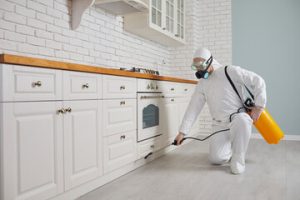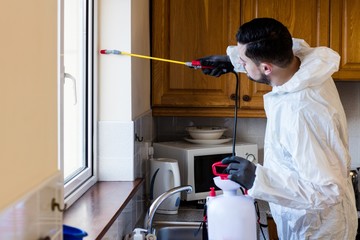Pests can disrupt homes and workplaces quickly. They spread disease, damage property, and create stress. Early detection is crucial for managing infestations effectively. Ignoring small signs often leads to larger problems.

Understanding pest behavior helps prevent future invasions. Rodents, insects, and other creatures follow predictable patterns. They seek food, water, and shelter, which humans often unknowingly provide. Observing these patterns allows targeted interventions. Contact Ben’s Pest Control for professional help.
Not all pests are equally harmful, but all are persistent. Some insects carry bacteria that affect health. Rodents can chew through wires, risking fire hazards. Birds and bats may damage insulation or create noise issues.
Integrated strategies often outperform single solutions. Combining physical barriers, environmental changes, and chemical treatments works best. Relying solely on pesticides can lead to resistance. Rotating approaches keeps pests off balance and reduces infestations.
Proper sanitation is the first line of defense. Cluttered areas give pests hiding spots. Food crumbs and standing water attract unwanted guests. Regular cleaning reduces their ability to survive indoors.
Sealing entry points stops intrusions before they start. Cracks, vents, and gaps allow pests to enter unnoticed. Weather stripping and door sweeps provide simple protections. Even small openings can be gateways for large infestations.
Monitoring tools help track pest activity over time. Traps, sensors, and visual inspections reveal patterns. Timely monitoring prevents minor issues from growing. It also guides when and where treatments should be applied.
Certain pests prefer specific environments, which guides control methods. Cockroaches thrive in warm, humid areas with accessible food. Ants follow trails to hidden sources of sustenance. Understanding preferences allows targeted elimination.
Biological control methods are gaining attention. Predators, parasites, or microbes can naturally reduce pest populations. These approaches minimize chemical use and environmental impact. They also maintain ecological balance in surrounding areas.
Chemical treatments remain essential for persistent infestations. Applying them strategically ensures safety and effectiveness. Overuse can harm non-target species and humans. Proper dosage and timing are critical for success.
Technology is transforming pest management. Smart sensors detect movement or droppings in real time. Automated traps release targeted substances only when needed. Data-driven approaches increase precision and reduce waste.
Education empowers homeowners and businesses alike. Knowing which pests are likely in certain seasons prepares proactive measures. Misidentifying pests often leads to ineffective treatments. Accurate knowledge allows more precise control.
Structural modifications prevent future problems. Installing screens, reinforcing walls, or adjusting landscaping deters unwanted intrusions. Even minor changes make properties less appealing to pests. Prevention often saves more than reactive measures.
Outdoor management is as important as indoor control. Mulch, standing water, and debris near buildings attract pests. Proper drainage and yard maintenance reduce breeding sites. These practices complement indoor sanitation efforts.
Climate affects pest prevalence and behavior. Warmer, wetter conditions often increase insect activity. Cold months may drive rodents indoors seeking warmth. Seasonal planning is essential for continuous protection.
Community awareness supports effective pest control. Coordinated efforts between neighbors prevent migration of pests from one property to another. Shared knowledge of outbreaks allows timely interventions. Collective action often yields stronger results.
Pest control impacts more than just immediate comfort. It protects structural integrity, health, and productivity. Infestations can trigger allergies, asthma, and infections. Controlling them maintains safe and efficient environments.
Chemical-free methods are preferred in sensitive settings. Essential oils, traps, and physical barriers offer alternatives. They reduce exposure risks for children, pets, and workers. These options are increasingly sought in eco-conscious spaces.
Frequent inspections prevent hidden problems from escalating. Attics, basements, and crawl spaces often harbor unnoticed pests. Early identification leads to faster, cheaper solutions. Routine checks should be part of property maintenance schedules.
Waste management plays a crucial role in pest prevention. Open trash bins and uncollected debris attract insects and rodents. Properly sealed containers and scheduled disposal reduce risk. Clean surroundings make infestation less likely.
Pest resistance is an emerging challenge. Overreliance on a single pesticide leads to hardened populations. Rotating methods and combining treatments combats resistance. Sustainable practices ensure long-term effectiveness.
Public spaces require specialized strategies. High traffic areas increase exposure to pests. Regular cleaning, monitoring, and staff training are essential. Preventive measures keep these areas safe for visitors.
Psychological stress from infestations is often overlooked. Constant worry about health risks and property damage affects wellbeing. Quick and effective management restores peace of mind. Addressing both physical and mental impacts is essential.
Water management reduces breeding grounds for mosquitoes and other pests. Standing water, clogged drains, and leaky pipes attract insects. Fixing these issues lowers populations naturally. Combining with chemical-free repellents enhances results.
Pest-proof storage protects food and materials. Containers with tight lids prevent contamination. Shelving systems off the ground minimize access for crawling pests. Proper organization simplifies monitoring and cleaning.
Wildlife intrusions require humane control methods. Birds, bats, and squirrels should be deterred without harm when possible. Netting, spikes, or sound devices redirect animals safely. Ethical approaches maintain biodiversity while solving problems.
Pest control requires consistent commitment. Sporadic efforts often fail to eliminate the problem fully. Integrated, year-round approaches maintain low risk. Regular review and adjustment ensure long-term success.
Innovative materials help deter pests naturally. Copper mesh, special coatings, and treated fabrics prevent entry or nesting. These solutions reduce the need for chemicals. They complement overall management strategies effectively.
Indoor air quality is affected by pest presence. Droppings, dander, and bacteria compromise ventilation systems. Removing pests reduces allergens and pathogens. Healthy air promotes overall wellbeing.
Training staff or residents in basic identification aids rapid response. Recognizing early signs reduces reaction time. Educated individuals help maintain pest-free spaces. Awareness transforms reactive measures into proactive care.
Pest management supports sustainability goals. Reducing chemical usage and preventing infestations conserves resources. Maintaining healthy environments aligns with broader ecological efforts. Sustainable strategies protect both people and planet.
Understanding legal regulations ensures safe practices. Misuse of chemicals or traps can result in fines or harm. Compliance safeguards residents, employees, and the environment. Knowledge of rules is as important as technical skills.
Long-term planning is vital for large properties. Warehouses, office complexes, and campuses require scheduled inspections. Integrated pest management plans guide actions over time. Strategic approaches prevent costly emergencies.
Pests evolve alongside human environments. Urbanization, climate change, and globalization introduce new challenges. Continuous learning and adaptation are necessary for control. Staying ahead ensures minimal disruption.
Preventive landscaping discourages infestations before they begin. Plant selection, mulching practices, and spacing influence pest behavior. Smart design reduces shelter and food availability. Outdoor planning is as crucial as indoor measures.
Monitoring post-treatment ensures lasting results. Follow-up inspections identify survivors or returning populations. Adjustments can be made before infestations re-establish. Persistent vigilance guarantees long-term protection.
Emerging research offers hope for eco-friendly pest solutions. Natural repellents, pheromone traps, and microbial agents are promising. Combining these with traditional methods enhances efficiency. Innovation keeps pest control adaptive and effective.
Pest control ultimately balances safety, efficiency, and responsibility. It protects health, property, and comfort. Strategic approaches minimize chemical exposure. Awareness, technology, and persistence ensure effective management.
